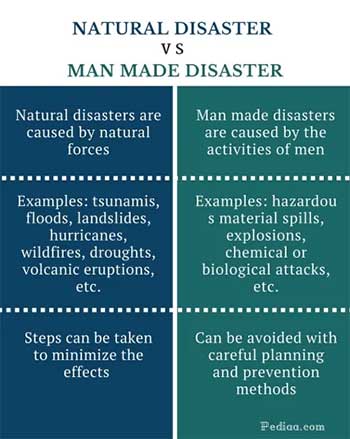Date : 04/09/2023
Relevance – GS Paper 3 – Disaster Management
Keywords – NDRM, NDRF, CDRI, G20
Context
Human activities have significantly contributed to increasing the susceptibility to climate-related risks.
Global Catastrophic Events
- Global catastrophic events are increasingly taking lives as the effects of climate change become increasingly evident.
- In recent times, heatwaves have engulfed three different continents.
- Large-scale wildfires have devastated regions in Greece and Canada.
- Just a fortnight ago, the Yamuna River exceeded its highest flood level recorded 45 years ago, submerging sections of Delhi.
Human-Induced Factors Leading to Natural Calamities
Human activities have significantly contributed to the rise of natural disasters:
- Anthropogenic Climate Change: The frequency and severity of disasters have surged, with human-induced climate change playing a pivotal role.
- Unsustainable Development Planning: Sustainability should encompass economic, societal, and environmental aspects. Often, development prioritizes infrastructure growth without due consideration for sustainability. This includes construction in flood-prone areas, encroachment on water bodies, and unsustainable urban planning.
- Altered Disaster Landscape: The disaster landscape in India has undergone various transformations. Some areas have experienced drastic changes, surpassing their ecological carrying capacity, leading to increased loss and damage.
- Ecological & Habitat Decline: Population growth, industrialization, and commercial activities have placed immense stress on fragile ecosystems. Common threats include deforestation, soil erosion, and overexploitation of limited land resources. The conversion of forests for agriculture and the exploitation of timber, fodder, and fuelwood endanger biodiversity.
Disaster Management Structure in India

India has established a comprehensive disaster management framework, including:
- National Disaster Management Authority (NDMA): NDMA is the primary statutory body for disaster management in India, established under the Disaster Management Act, 2005. Led by the Prime Minister, it oversees disaster management at the national level. Additionally, State Disaster Management Authorities (SDMAs) headed by respective Chief Ministers are formed to ensure a holistic and integrated approach to disaster management across states.
- National Disaster Response Force (NDRF): NDRF, founded in 2006, stands as the world's largest specialized force dedicated to disaster response. It operates under the Ministry of Home Affairs, under the leadership of the Director-General. Comprising 15 battalions drawn from various security forces like BSF, CISF, CRPF, ITBP, SSB, and Assam Rifles, NDRF is a versatile and technologically advanced force capable of efficiently handling diverse natural and man-made disasters, including building collapses, landslides, catastrophic floods, and cyclones.
India's Disaster Resilience Initiatives
- Coalition for Disaster Resilient Infrastructure (CDRI): The concept of CDRI originated in 2016 at the Asian Ministerial Conference on Disaster Risk Reduction in New Delhi, where India proposed the idea. India is at the forefront of this coalition, extending its expertise in Disaster Resilient Infrastructure (DRI) to friendly nations.
- India's Role in G20 - Disaster Risk Reduction Working Group: India has taken a pioneering step by establishing the inaugural G20 Disaster Risk Reduction Working Group. This initiative is significant as G20 member countries collectively account for approximately 85% of the global GDP and roughly two-thirds of the world's population. Recognizing the strong link between economic choices and human vulnerability to disasters, the G20 is uniquely positioned to shape a new approach to decision-making that incorporates disaster risk considerations.
Suggestions and Way Forward
- Uncovering the True Cost of Disasters: Historically, nations have expended significant resources in disaster response rather than proactively investing in prevention and mitigation efforts. It is imperative to determine the actual cost of disasters to emphasize the importance of upfront investment.
- Embracing Long-Term Solutions: Addressing the challenges posed by disasters requires a shift towards comprehensive, long-term strategies. This entails conducting thorough risk assessments and vulnerability evaluations. Additionally, understanding how socioeconomic factors exacerbate issues in specific communities within urban areas is crucial.
- Analyzing Implications of Carrying Capacity: Evaluating the implications of enforcing strict carrying capacities in specific regions is essential. This includes examining limitations on urbanization and restrictions on certain infrastructure development practices. Balancing the need for enhanced connectivity with ecological preservation is vital.
- Transparency Mechanisms: Standardizing transparency mechanisms is essential. This involves the establishment of transparency boards that provide clear information on the cost, quality, and quantity of relief items. Implementing social audits and enabling citizens' reports should become standard practices in all relief operations, whether conducted by governments or civil society organizations.
- Investing in Rural Infrastructure and Traditional Wisdom: Developing rural infrastructure in disaster-prone areas is critical, but not at the expense of livelihood recovery and the immediate needs of local communities. Indigenous and low-cost traditional technologies employed by tribal communities in India offer valuable insights into mitigating the impact of natural disasters, such as drought.
- Prioritizing Environmental Protection: Governments should rigorously enforce domestic laws and international conventions related to environmental protection. This proactive approach is vital to safeguarding ecosystems and minimizing the risk of disasters caused by environmental degradation.
Probable Questions for UPSC Mains Exam –
- How have human activities, particularly in rapidly developing countries like India, contributed to the increasing vulnerability of regions to climate-related disasters? Suggest concise policy measures to address this issue. (10 marks, 150 words)
- Outline the essential components of a comprehensive disaster management strategy for India. Provide concise insights into how these components can be effectively implemented in disaster-prone regions. (15 marks, 250 words)
Source – The Hindu








